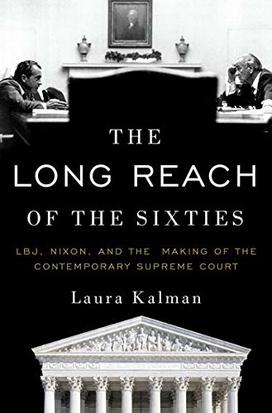
Legal historian and professor Risa Goluboff *03 is the first woman to serve as dean of the University of Virginia School of Law. Her scholarship has focused on American constitutional and civil rights law, and she’s the author of The Lost Promise of Civil Rights and Vagrant Nation: Police Power, Constitutional Change, and the Making of the 1960s. With the possibility that Roe v. Wade may be overturned making headlines, PAW asked Goluboff — who clerked for Justice Stephen Breyer — to recommend three books for understanding the U.S. Supreme Court. She suggested these:

Becoming Justice Blackmun: Harry Blackmun’s Supreme Court Journey
By Linda Greenhouse
Greenhouse, a Pulitzer-prize-winning New York Times Supreme Court reporter for many decades, was the first person granted access to the voluminous papers of Justice Harry Blackmun. Greenhouse hews closely to those papers in this astute biography of the Nixon appointee who shifted considerably to the left during his 24 years on the court. The result is an illuminating account of how the court actually works as an institution — the conferences in which the justices share their views about cases, the role of recent law school graduates who serve as judicial clerks, the memos, oral arguments, and draft after draft of circulated opinions. That a good portion of the book concerns Roe v. Wade, which Blackmun wrote, makes it all the more timely.

The Long Reach of the Sixties: LBJ, Nixon, and the Making of the Contemporary Supreme Court
By Laura Kalman
I chose this sweeping legal and political history for two reasons. First, as Kalman argues, the common characterization of the Warren Court as liberal and activist continues to define much of today’s debates about the Court as an institution and its interpretations of the Constitution. Understanding today’s Supreme Court, then, requires understanding the Warren Court and its time.
Second, Kalman’s fundamental interest here, as in many of her other important and prize-winning books, lies in the relationship between law and politics. Relying on presidential papers and recordings as well as Supreme Court archives, she shows how the presidencies of LBJ and Richard Nixon transformed the politics of Supreme Court nominations. In so doing, they heightened the stakes for longstanding debates about the politics of the court writ large that continue to occupy us today.

Courage to Dissent: Atlanta and the Long History of the Civil Rights Movement
By Tomiko Brown-Nagin
Brown-Nagin’s Bancroft-prize-winning account of the civil rights movement in Atlanta locates the Supreme Court within larger legal, social, and political dynamics of constitutional change. Much public discussion about the law, legal change, and the Constitution focuses on the Supreme Court as the crucial, if not the exclusive, actor.
But the court does not decide cases in a vacuum. Before cases arrive at the court, and long after they depart, they are brought, shaped, implemented, and reimagined by lawyers and clients, social movement organizations and politicians, journalists and scholars. Courage to Dissent provides a compelling account of the whole panoply of historical actors involved in this complex process of legal and social change.










No responses yet